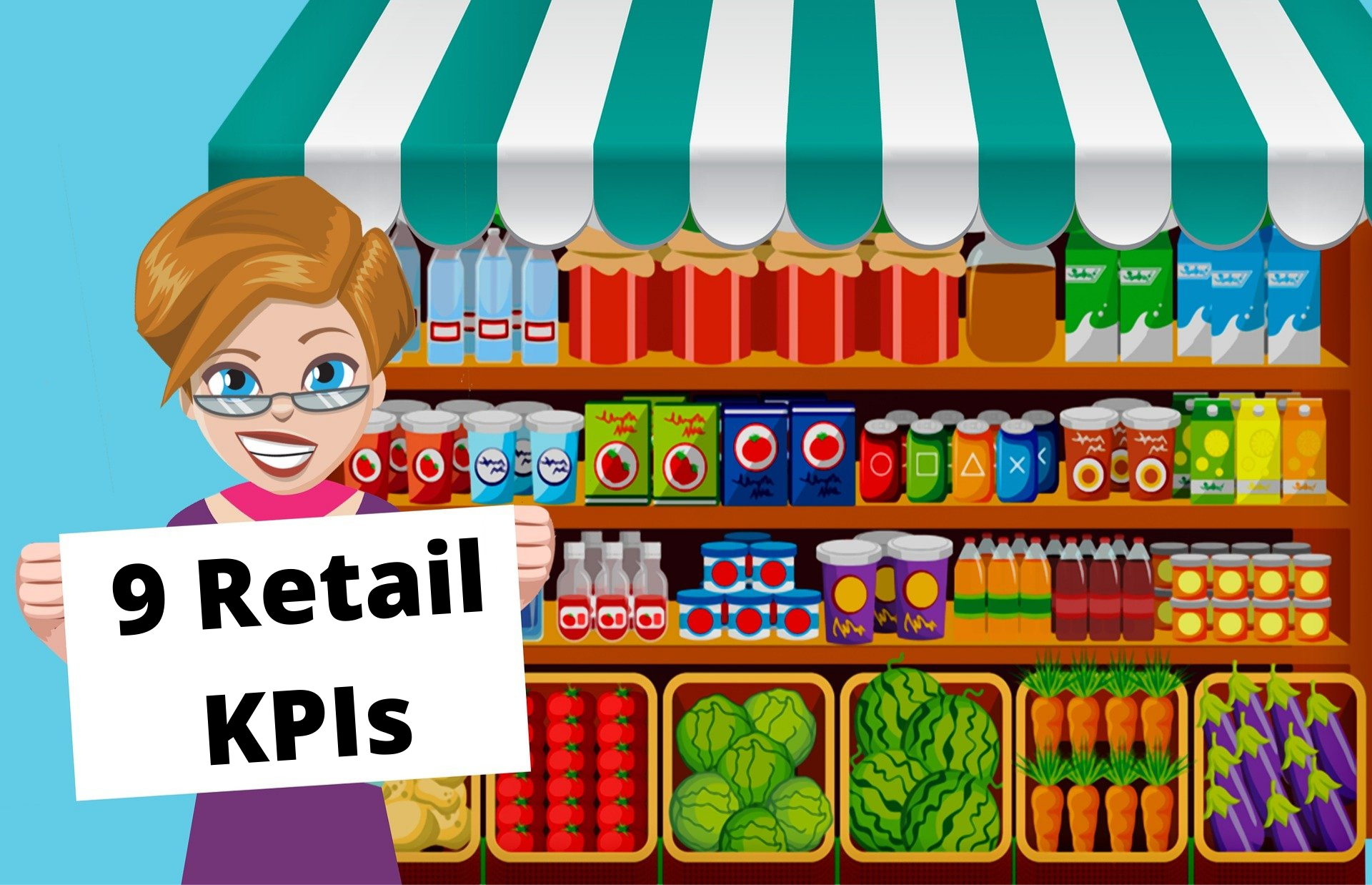Accounting for the shop is the process of recording its daily financial transactions in an accounting system. This allows shop owners to closely monitor their income and expenses. This is necessary to prepare accurate financial statements and analyze key financial indicators.
Table of Contents:
- What is accounting for the shop?
- Financial statements that are important to all shops
- Accounting automation
- Relevant parameters of accounting for the shop
- 10 Accounting Basics to Run a Shop Successfully
What is accounting for the shop?
Keeping and maintaining your accounting for a shop can save you money compared to hiring an accountant. Shop accounting includes tracking expenses, accounts payable, sales, accounts receivable, and inventory levels. The accurate recording is one of the most important parts of successful accounting.
Three main financial statements should be maintained up to date: balance sheet, income statement, and cash flow statement.
Financial statements that are important to all shops:
1. Profit and loss account or income statement
In your income statement, shops can keep track of the sales or all the money the business earns. In shop accounting, this mainly comes from customers who buy goods. Subtract the cost of the sold item and the resulting number is the amount left to pay the overheads. You can also track expenses such as rent and employee salaries on your income statement.
2. Balance Sheet
The balance sheet helps in tracking assets, liabilities, and equity. Shops can list assets such as equipment on one side of the balance sheet and liabilities on the other side such as business credit cards. Your assets minus your liabilities is your capital, which is the value of your shop other than your debt.
These three things - assets, liabilities, and capital are the main components of the balance sheet because they always need to be balanced against each other.
The balance sheet differs from the income statement. The income statement covers periods such as one week, one month, one year, etc., while the balance sheet is formulated for exact dates and times.
3. Cash Flow
A cash flow statement is similar to an income statement in shop accounting. It captures the money that goes in and out of the business. However, the cash flow statement is more accurate about when these transactions take place.
For example, an income statement sales may have an invoice, but it may take 30 days for the customer to pay the invoice. The cash flow statement records the actual payment receipt date.
Keeping an accurate record of your cash flow in these financial statements is essential to the emergence of your shop.
Accounting automation
Accounting for a shop can be a long and tedious process, especially if you are inexperienced. You can outsource bookkeeping, hire an in-house accountant, or try to do your accounting.
- If you want to do the accounting yourself, you must consider automating it by using effective and professional software
- Accounting software for shops keeps track of all finances and includes buy and sell orders, accounts receivable, invoices, and accounts payable
- The best accounting software helps you prepare important financial statements such as balance sheets, income statements, and cash flow statements
- Accounting software is a great way to organize your information and helps with accuracy
Let us look at an example of accounting for a shop:
Let's say you own a shop of several furnishing products. Assume that you keep a 30% markup on all products. Your inventory was valued at $50,000 last quarter. You have made sales of $20,000 and purchases of $5,000 inventory during the quarter. Now to find out the inventory's value, you will indulge in shop accounting.
Let us consider this:
Initial inventory value: $50,000
New inventory purchases: $5,000
Total inventory: $55,000
Total retail sales: $20,000
Total retail sales with markup: $20,000 * 30% = $6,000
Now the inventory's value = $55,000 - $6,000 = $49,000 (subtraction of total retail sales with markup from the total inventory).
Relevant parameters of accounting for the shop:
1. Inventory accounting
Use the system to track the daily flow of goods in and out of the shop. You can track the quantity and cost of all shipments received, and each item sold. Regularly adjust rotten, stolen, or damaged items to match records with an actual inventory.
Inventory is the shopkeeper’s most important asset and is often created by the shop owner of the largest investor. Therefore, it is important to know exactly where your inventory account is always.
2. Income
Shops can track all revenues and regularly compare bank statements and records to find discrepancies. Revenue is the number one source of income for your shop, but there are other sources of income, such as extended warranty sales, after-sale service fees, and commissions on consignments.
An electronic point-of-sale or POS associated with your accounting system, perform regular audits to check the integrity of your records and include revenue that does not go through manually added POS.
Shops must keep detailed receipts for any kind of income earned and transfer the totals to the accounting system as often as possible.
3. Cost and Expenses
Shops must keep track of their expenses and income and compare these records with their bank statement regularly.
- You can set up your accounting systems to automate as many recurring expenses as possible, such as rent and debt payments, and automatically record these expenses on a period-by-period basis
- Record all variable costs such as cost of goods sold, labor costs, fees, taxes, purchases, etc. in the corresponding double-entry bookkeeping
- Post large one-off capital investments such as showcases and lighting fixtures to your account so you can easily separate them to calculate normal operating profit
4. Debt and accounts receivable
Shops need to keep a detailed record of the debt/borrowed funds.
You can use the accounting methodology to remind you to pay your pending invoices, outstanding loans, and debts on time and manage your loan collection activities with your customers. Both are very important for small shops.
You can improve or maintain your credit score by managing your debt, and you can maintain positive cash flow by managing your accounts receivable.
5. Equity and retained earnings
Even if you run your shop as a sole proprietor, keep track of all the resources that the owner has invested in your business with a separate equity account. This requires continuous attention in the long term to maintain accurate records.
This is useful if your partner leaves the shop or your company transforms into a corporate structure.
10 Accounting Basics to Run a Shop Successfully
If you want to grow your shop business, you need to manage your accounting diligently and you don’t even need an accountant for day-to-day management. These 10 accounting basics will tell you all that you must know to understand accounting for the shop.
Get accounting software
There are many accounting software apps available but the best options depend on your shop, products, and your tastes. Select your accounting system that can track sales, costs, and inventory. Avoid apps that only generate invoices or provide reports. Your software should be capable enough to handle all kinds of accounting and reports and that can sync with your shop dealings.
Track cash flow
Take care of your money. The first thing to do is to get a bank account for your shop and use it only for business, not for personal transactions. Monitoring your cash flow can ensure if your shop is making money or not. You also need to pay attention to the availability of funds for paying remuneration to your employees, the delay between the customer paying and the bank receiving the money, or the payment method you offer your customers. Shops must track the amount you spend, the money you expect, and the amount that comes into your current bank balance, each week.
Follow these techniques and strategies to enhance your cash flow:
- Do not pay faster than necessary
- Consider offering your customers a monthly payment plan or subscription to guarantee their receipt of funds
- Shops don’t need extravagant cash flows, but to be on the safer side, they must maintain a bank balance
Decide how to count inventory
Inventory is a product for sale or the material used to manufacture that product, which is sold by your shop.
You must consider the cost of packaging, determine the minimum inventory level required at hand and track inventory for effective shop accounting. Inventory is equal to money.
Let us use this example for Inventory accounting
If you buy 100 stationery items products for $ 100 each and the price goes up to $ 150 tomorrow, your inventory suddenly becomes more valuable. But if the price drops to $ 50 tomorrow, your inventory will be below. It is important to monitor your inventory regularly.
Understand the cost of sales
Cost of sales is the cost directly related to the product you are selling. This is the inventory sold plus the cost of creating that inventory.
Let's say you sell computers. Whatever the cost of a part of the cost of building it, it must be the cost of the goods sold for this computer. If a computer costs $ 100 and you paid $ 10 for its packaging, the cost would be $110.
Breakdown of cost of sales
You can calculate this using a weighted average. Everything that is directly related to a product, which increases in cost as you add more products, should be included in the cost which also includes salaries and all kinds of production/manufacturing costs.
The "gross profit" is the selling price of an item minus the cost of that item. This just shows how much you are making in each article before adding any other costs.
Calculate all costs
Costs are directly related to your sales and profit volume. Expenses that do not increase or decrease irrespective of whether a shop conducts business or not are called "fixed costs". For example, if a shop’s monthly salaries are payable or monthly rent is fixed. These costs are not part of the manufacturing cost and are not included in the gross profit.
However, they affect revenue and cash flow. These costs are considered "fixed" because you have to pay for them even if the shop doesn’t conduct any business. If your expenses change from month to month, use the average for your budget.
Calculate your break-even sales
Budgeting, management, and planning are important elements of shop management. Break-even sales are the sales that must be earned to cover all expenses.
For example, suppose all "fixed costs" are $ 5,000 per month in addition to manufacturing costs (including labor costs).
You need to sell enough products to cover an additional $ 5,000 for the break-even point (no profit or loss).
Break-even point calculation = Calculate gross profit per unit divided by the fixed cost by this amount to find the number of units that need to be sold.
If you have a break-even point of $ 5,000 and you think you can only sell 3,000, then there is a problem.
Track pre-tax profits and sales
Tracking profits and sales helps you manage your money.
For example, you need to sell 5,00 products this month to reach the break-even point. On the 15th of this month, only 100 have been sold. You only have 15 days to cover 400 products more, so it doesn’t make sense for your shop to incur marketing or advertising expenses as your business still hasn’t reached its break-even point.
Google Analytics is a great technique to identify eCommerce shops and accounting.
Besides this, your shop needs to account for all other "fixed" costs. Calculation of Pre-Tax Profit is again very important for shop accounting.
For example, suppose you sell a $ 3,000 service but offer a three-month payment plan. Sales are displayed as $ 3,000, but bank accounts can only display $ 1,000. So even if you say that accounting software made a profit of $ 500 after all expenses, there is no additional $ 500 in your bank account. If all costs are paid this month, your bank account can be negative.
There are many accounting rules that you need to know to manage your business.
Set the correct tax rate for your customers
Taxes are unavoidable and can be very complex. If you sell many different products and services to many people around the world, this may be the point to seek professional advice. As long as the product is marked as taxable, the customer must calculate the tax payable after specifying the address.
Schedule tax payments
Now that you are ready to collect taxes, you also need to make sure you are ready to pay them. It is expected that you will need to file at least the same amount of tax that you have collected. This means that it is important to recognize this money as a tax and set it aside. Otherwise, it may hurt when it's time to get rid of it! Consider opening a separate shop account for taxes only.
Understanding Revenue
This covers the entire income statement and cash flow. The last point to tackle is the balance sheet. This helps you track the long-term health of your shop and see how your shop works overall. The income statement is a snapshot. The balance sheet is the big picture. The balance sheet consists of liabilities, assets, and equity. Assets are as valuable as bank cash. Debt is the debt/payment you owe. Equity is the difference between the two. A simple check to make sure your balance sheet is correct is to remember that assets = liabilities + equity.
Conclusion
Accounting for the shop should be a top priority for shop owners. This can be more complicated because you have inventory, but it helps to choose the right method of determining the cost of goods sold and track inventory on a regular or permanent basis. Make sure you are using important financial statements such as balance sheets, income statements, and cash flow statements. Accounting software can potentially track your finances and make your shop accounting process more manageable.
Key Takeaways
- Integrate accounting software into your online and offline shop. This is to help you track your expenses, taxes, and understand if you are making a profit or making a loss
- Select the correct payment gateway for your shop accounting, which is now an accounting standard that allows your business to make money and properly submit its taxes
- Make sure you have the correct tax settings
- Track your true income and expenses
- Always stay on time for the accounting deadline and meet relevant US tax dates and deadlines. Online shop accounting will help you identify all the relevant principles to follow for maximizing and tracking sales and profitability
Related Articles











